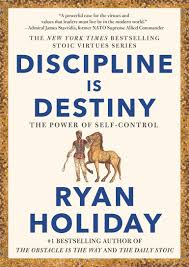White Paper: Strategic Action Plan for Business Development, Innovation, and Execution for Indian Engineers, Scientists, Developers, and Entrepreneurs
Executive Summary
This white paper presents a comprehensive framework tailored for Indian professionals—engineers, scientists, developers, and entrepreneurs—to drive business development, innovation, and disciplined execution. It integrates global best practices with contextual relevance to the Indian ecosystem, emphasizing discipline, self-control, entrepreneurial mindset, and strategic execution.
I. Understanding Key Concepts
Execution as a Differentiator
Execution is more than completing tasks; it bridges aspirations and results. According to Bossidy and Charan (Execution: The Discipline of Getting Things Done), execution is the "missing link between aspirations and results." It demands discipline, accountability, and relentless follow-through.
Discipline and Self-Control
Self-discipline is the cornerstone of success. It involves resisting distractions, maintaining consistency, and developing routines. As Brian Tracy notes, "The ability to discipline yourself to delay gratification... is the indispensable prerequisite for success."
Innovation
Innovation is not mere ideation. As Peter Drucker states, "Innovation is the specific instrument of entrepreneurship." It involves pragmatic problem-solving and elevating performance.
Entrepreneurial Opportunity Identification
This is about recognizing and acting on dynamic market opportunities. As Shane (2003) emphasizes in A General Theory of Entrepreneurship, it requires perceiving patterns others miss and acting decisively.
II. Context for Indian Professionals
India's workforce is well-educated, English-speaking, and digitally empowered. Organizations like ISRO highlight the nation's technical capacity. Online platforms (e.g., Upwork, Fiverr, Freelancer) empower Indian talent to offer services globally. Despite these advantages, Indian professionals often struggle with strategic execution and sustained innovation.
III. Action Plan for Strategic Execution, Innovation, and Business Development
A. Goal Setting and Strategic Planning
- Define Wildly Important Goals (WIGs)
- Use the SMART framework (Specific, Measurable, Achievable, Relevant, Time-bound).
- Example: Focus on fintech solutions for rural banking or AI-based diagnostics.
- Break Down Large Goals
- Break major projects into sprints or milestones.
- Application: Agile and Scrum methods.
- Strategic Focus and Flexibility
- Build plans that are reality-based but flexible.
- Tools: SWOT Analysis, Lean Canvas, Business Model Canvas.
B. Entrepreneurial Mindset & Behaviour
- High Need for Achievement
- Encourage personal responsibility and stretch goals.
- McClelland’s Theory of Needs applies here.
- Internal Locus of Control
- Promote autonomy and ownership.
- Application: Leadership training, journaling, and mentoring.
- Adaptive Thinking and Flexibility
- Use MVPs and lean testing.
- Tools: A/B testing, customer feedback loops.
- Risk Mitigation
- Minimize initial investments.
- Conduct competitive analysis, patent searches, attend industry expos.
C. Disciplined Execution and Process Management
- System over Goal
- Focus on repeatable, documented processes.
- Use SOPs, checklists, Kanban boards.
- Act on Lead Measures
- Track predictive indicators, e.g., number of customer demos.
- Use OKRs (Objectives and Key Results).
- Compelling Scoreboard
- Public dashboards for teams.
- Example: Real-time sales and engagement stats.
- Cadence of Accountability
- Weekly review meetings.
- Tools: Asana, Trello, Notion, Monday.com.
- Time Management
- Time block work hours for deep tasks.
- Techniques: Pomodoro, Eisenhower Matrix.
- "Be a Doer" Mindset
- Practice courage through micro-decisions.
- Encourage problem ownership.
- Self-Care and Work-Life Balance
- Encourage use of online mental health support (e.g., TalktoAngel).
- Promote regular exercise and unplugging.
D. Leveraging Global Talent and Local Adaptation
- Harnessing Global Talent
- Outsource design, SEO, and content.
- Collaborate via platforms like Upwork or Toptal.
- Localised Adaptation
- Adapt strategies based on region and demographics.
- Application: Urban vs. rural tech adoption strategies.
- Directed Improvisation
- Blend top-down planning with bottom-up innovation.
- Example: Collaborate with ISRO for commercial applications.
- Value Innovation
- Apply the Blue Ocean Strategy.
- Redefine customer value by eliminating non-essential features and adding high-impact functions.
IV. Case Examples and Applications
- ISRO Collaboration
- Satellite data for agriculture tech ventures.
- Joint projects on climate resilience.
- Indian SaaS Startups
- Zoho and Freshworks focus on disciplined global execution.
- Frugal Innovation (Jugaad)
- Low-cost ECG machines, portable solar panels.
- Online Freelance Success
- Indian designers and developers competing globally via remote platforms.
V. Conclusion
By combining self-discipline, systems thinking, innovation, and execution, Indian professionals can realize transformative growth. The convergence of global connectivity, local ingenuity, and institutional support (e.g., ISRO, startup India) offers a unique launchpad. The time to act is now—strategically, skillfully, and with relentless discipline.
References
- Bossidy, L., & Charan, R. (2002). Execution: The Discipline of Getting Things Done. Crown Business.
- Tracy, B. (2007). No Excuses!: The Power of Self-Discipline. Vanguard Press.
- Shane, S. (2003). A General Theory of Entrepreneurship: The Individual-Opportunity Nexus. Edward Elgar.
- McClelland, D. (1961). The Achieving Society. Van Nostrand.
- Kim, W. C., & Mauborgne, R. (2005). Blue Ocean Strategy. Harvard Business Review Press.
- Drucker, P. (1985). Innovation and Entrepreneurship. HarperBusiness.
- Ries, E. (2011). The Lean Startup. Crown Business.
- Covey, S., McChesney, C., & Huling, J. (2012). The 4 Disciplines of Execution. Free Press.
- TalktoAngel. https://www.talktoangel.com
- Upwork. https://www.upwork.com
Prepared by:
IAS-Research.com & KeenComputer.com – Empowering India's next generation of innovators, developers, and entrepreneurs.



